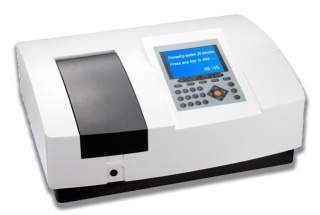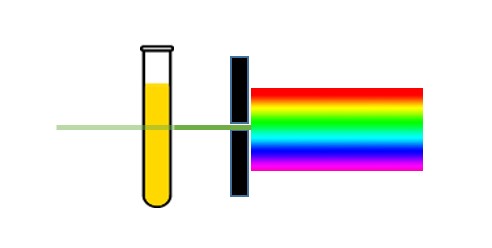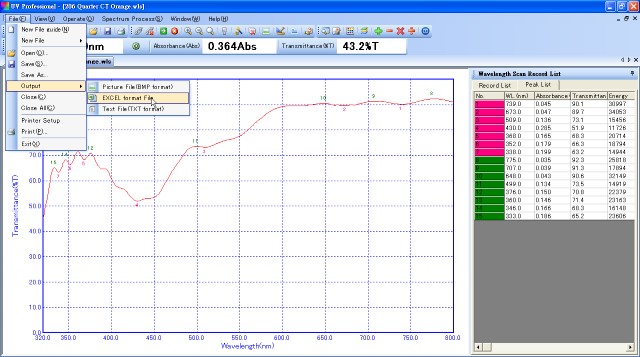Understanding Spectrophotometer (1) Principle & Concept

A spectrophotometer disperses the light of the lamp into a colorful "rainbow", and extract a "single-color" light into a light photo sensor, while the light passing through a sample, before the photo sensor. The light sensor measures the intensity of the single-color light and quantify the amount of light into numbers. Since part of the light were "absorbed" by the sample before the light sensor measurement, the number is actually a attenuation of the single-color light.

Extract a Single Color Light from "Rainbow" (Made by Grating)
By comparing the intensity of light with or without the sample, one can obtain a ratio of "luminosity" of the single color light, and we call it the absorption (or we can recalculate it into transmission). This is the principle of a "spectrophotometer". This is the basic principle of a spectrophotometer, as well as the concept of designing a spectrophotometer.
When the spectrophotometer is advanced and it is able to split a wavelength range into a certain details (e.g. per 0.1 nm), and measure the absorption value of each split points with records. And finally, draw & link all these point with absorption value into a "spectrum", then, we can call this "spectrophotometer" a "spectrometer". Such as the UV1800 spectrophotometer, is able to measure the spectrum in the range of wavelength from 190nm to 1100nm,we can treat it as a "spectrometer" as well.

Connect Each Single Point of Absorption Value, Becomes a "Spectrum"
Next: Understanding Spectrophotometer (2) Function & Application


